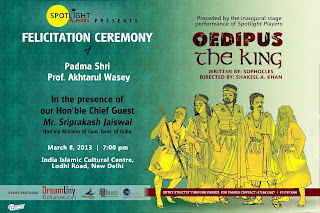Sometimes
you come across a book which turns you on with its cover, excites you with the
blurb and promises you an exciting journey. A part of them manage to do that in
the end, while the rest fall short of achieving the desired effect. ‘Life’s
Like That’ (LLT), by Prashant V. Shrivastava falls into the latter category.
The novel
has all the elements required of a mass seller book. Campus life, check.
Love-angle, check. Youth dilemmas, check. Lessons about life, check. Pretty
much everything is packed, but then where does it lack? A very loose structuring
and narration stifles the goodness out of this book, coupled with
too-big-to-go-unnoticed grammatical and editing mistakes. I felt sad to see
them throughout the book.LLT is a story about four friends, Preeti, Amit, Ishita and Sankalp. These four are joined by two other, Niharika and Rahul, as the story proceeds. The story is set in Udaipur, Rajasthan and uses some of the landmarks in the city to set some really important sequences. The college life and love life of Preeti-Amit, Ishita-Sankalp and Niharika-Rahul are interplayed alternatively and after a point the story starts to drag too much. Then the ending feels rushed. There’s quite a lot which could have been removed to get a tighter, nicer flowing story. This one failed to keep me glued.
A lot of effort has gone in explanation, to spell out the visuals, to explain the scene which sometimes went overboard to the verge of sounding desperate. The characters are explained mostly through their interaction with each other and each of them has a different outlook towards life. The book is light overall with not much melodrama, and love-scenes interspersed at frequent intervals. One of the things I liked about the story was the carefully planted social messages of women empowerment and education. I think that’s a wonderful thing to do with a story when you have the power to influence a large section of the society.
The love
story of Preeti-Amit takes center-stage in the story, and forms the crux as the
blurb informs. But the climax starts and ends within the last 50 pages of the
221 paged book, which roughly stands at just around twenty three percent of the
total book. The rest was just college life, story progression and confusion.
For me the book had an idea, but lacked focus. The content is severely hampered with the grammar and punctuation mistakes throughout the book, which is unforgivable and leaves a bad-taste.
I feel quite disappointed, mostly because this book had me expecting a lot from the brief I read and the introduction I got to the story and characters. But then, life’s like that.
Book: Life's Like That
Author: Prashant V. Shrivastava
Publisher: Blackbuck Publication
Price: Rs. 150
For me the book had an idea, but lacked focus. The content is severely hampered with the grammar and punctuation mistakes throughout the book, which is unforgivable and leaves a bad-taste.
I feel quite disappointed, mostly because this book had me expecting a lot from the brief I read and the introduction I got to the story and characters. But then, life’s like that.
Book: Life's Like That
Author: Prashant V. Shrivastava
Publisher: Blackbuck Publication
Price: Rs. 150















